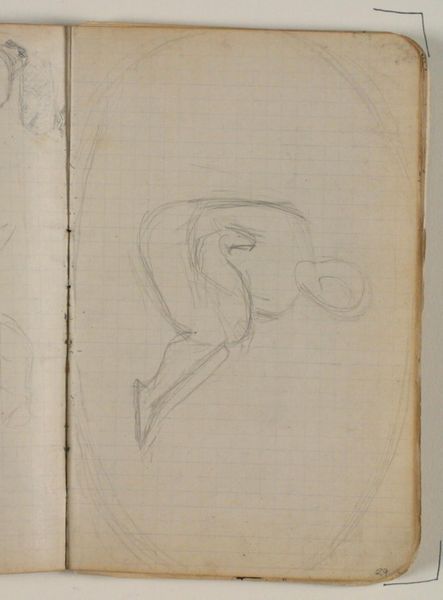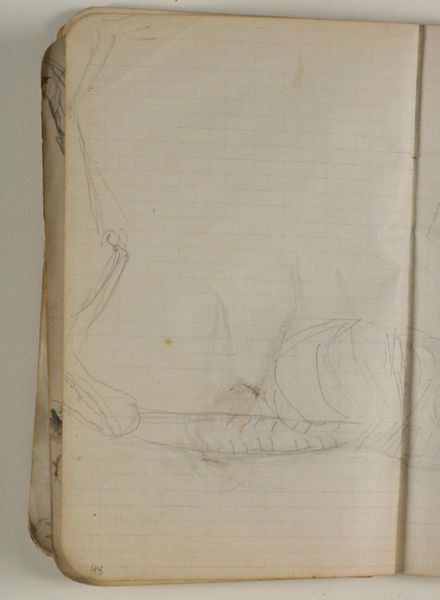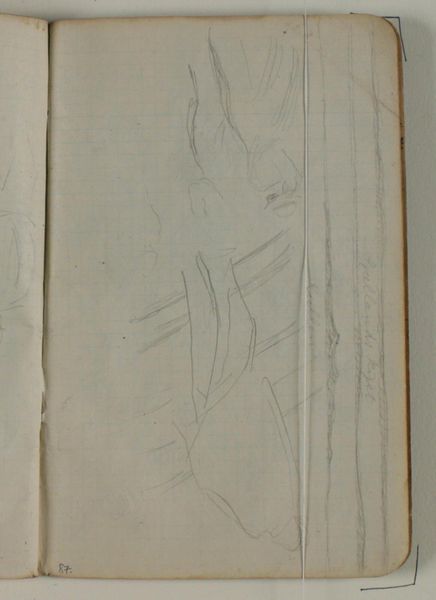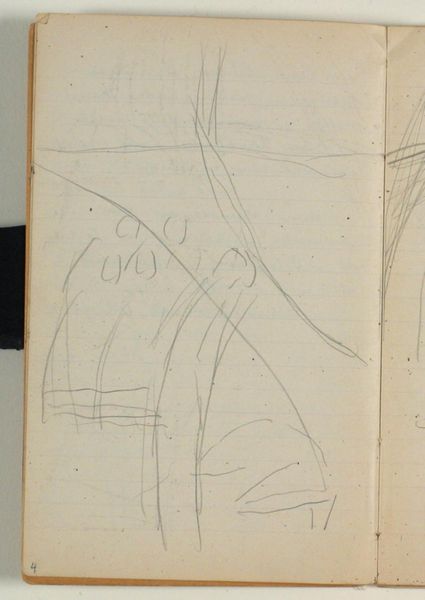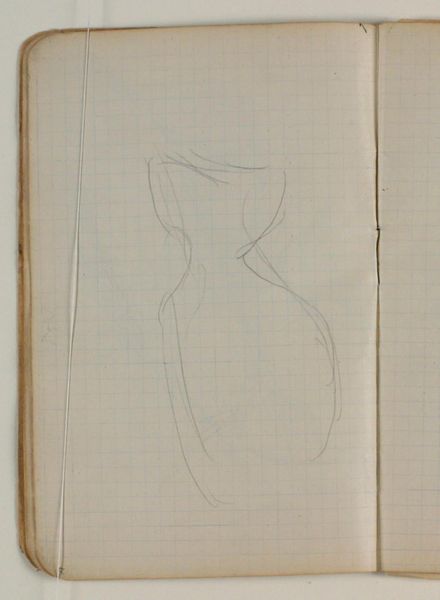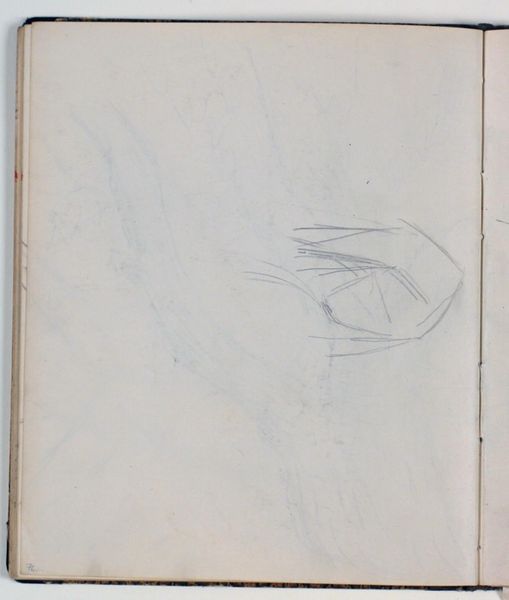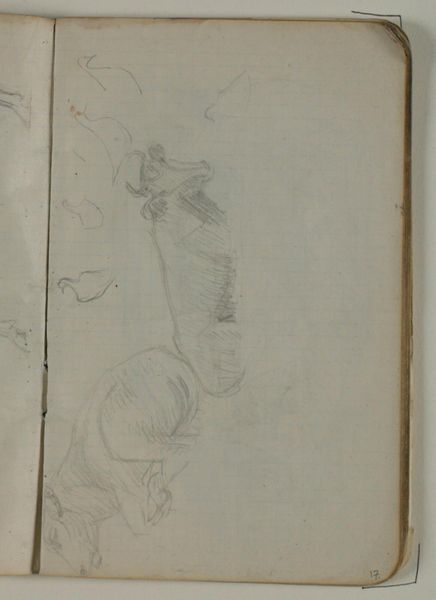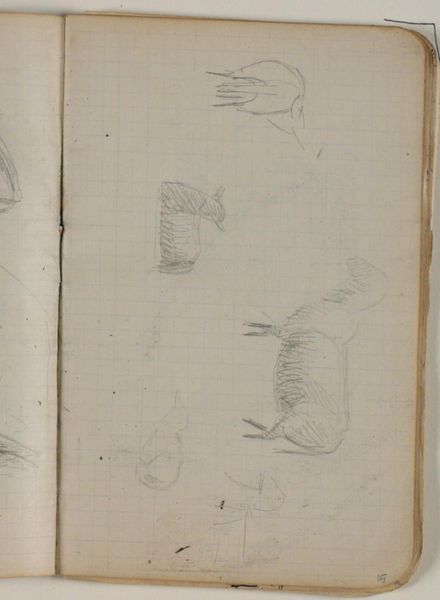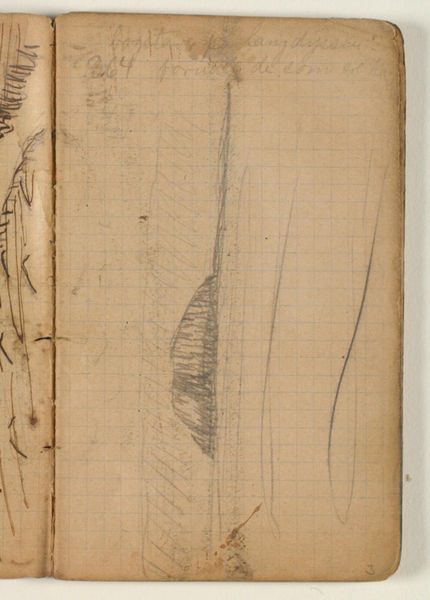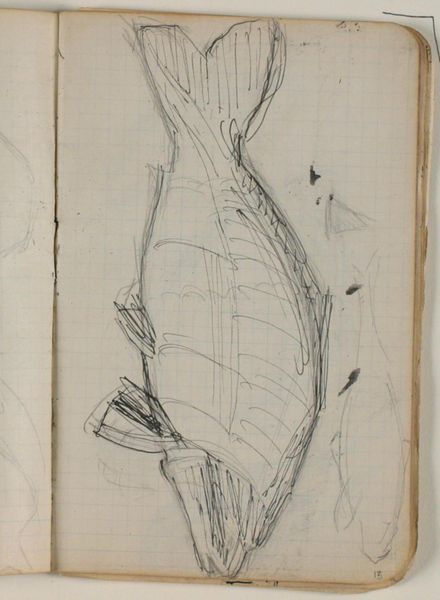
drawing, paper, pencil
#
drawing
#
paper
#
geometric
#
pencil
Dimensions: 169 mm (height) x 109 mm (width) x 5 mm (depth) (monteringsmaal), 169 mm (height) x 109 mm (width) (bladmaal)
Editor: So, this is "Løse rids" by Niels Larsen Stevns, a pencil drawing on paper, dating from 1905-1907. It's incredibly subtle. I’m struck by its fragility and how ephemeral the marks seem. What do you see in this piece, and how might we interpret its delicate lines within a broader context? Curator: This drawing, while seemingly simple, opens up interesting avenues for exploration. I am intrigued by the grid, which serves as the silent partner of the organic shapes floating across the page. It feels very modern, wouldn't you agree? Consider the early 20th century, the era of rapid industrialization. Is there a commentary here on the tension between organic and artificial, or even a suggestion of one trying to contain the other? Editor: That’s a really interesting point about the grid. I hadn’t thought about it in terms of industrialization, but that makes sense. I was also considering the psychoanalytic theory present in that period. Is it possible these shapes represent something from the artist's subconscious? Curator: Precisely! It's a visual language, open to individual experience. In a moment rife with anxieties regarding the rapidly changing landscape of Europe, abstraction provided an outlet for fears and a space to embrace freedom. Does this piece remind you of similar sentiments expressed at that time? Editor: Now that I consider it, these tentative lines are almost hopeful, defying any rigid interpretation. Curator: Yes, the open-endedness and fluidity allow room for questioning societal structures. Perhaps these lines act as metaphors for liberation, challenging fixed notions of identity or artistic representation? Editor: That's given me a totally different way to see this sketch. Thank you for pointing out the historical and societal context! Curator: My pleasure. Always remember that art doesn't exist in a vacuum. Understanding its social and historical underpinnings opens up entirely new avenues for interpretation.
Comments
No comments
Be the first to comment and join the conversation on the ultimate creative platform.


